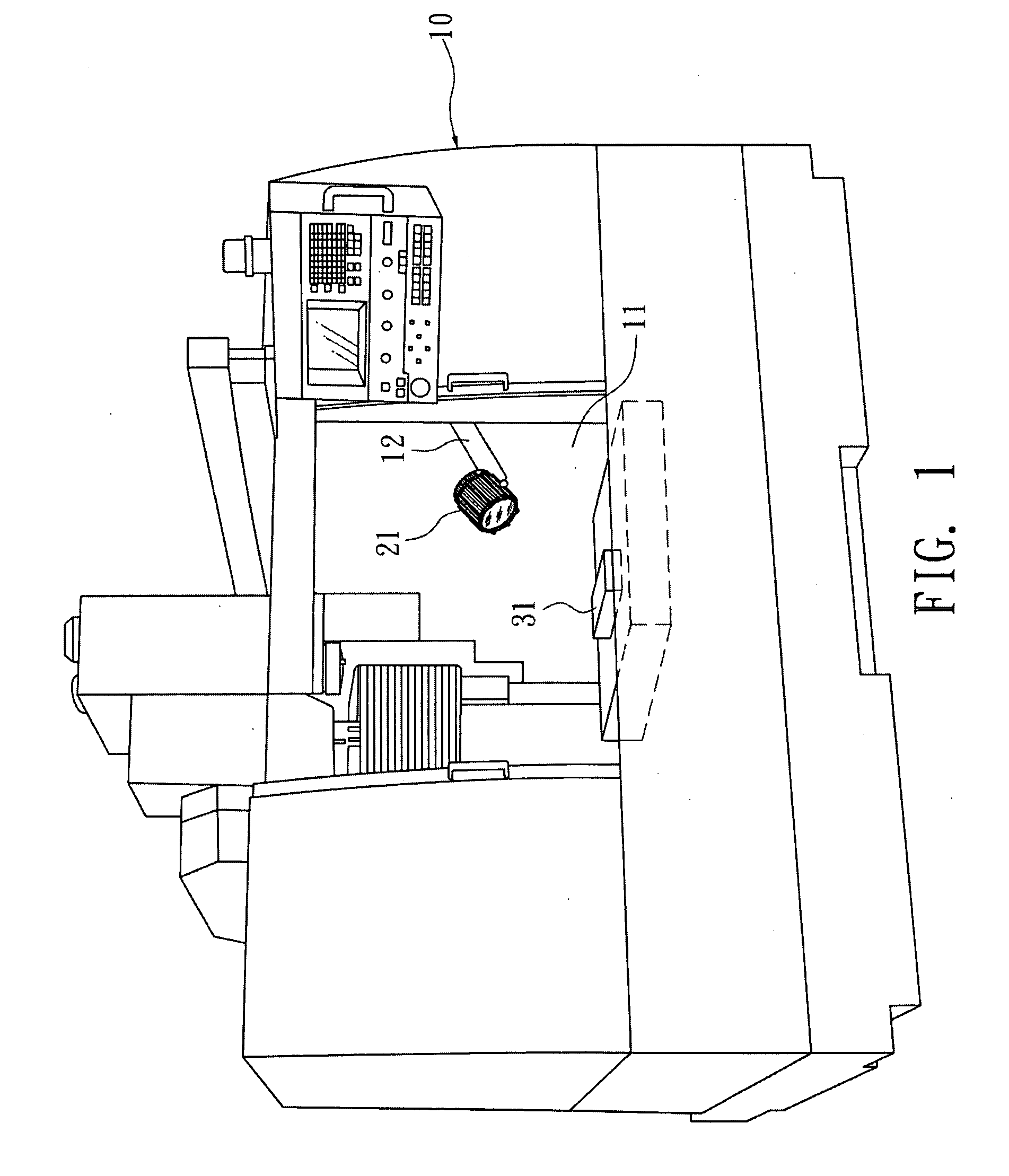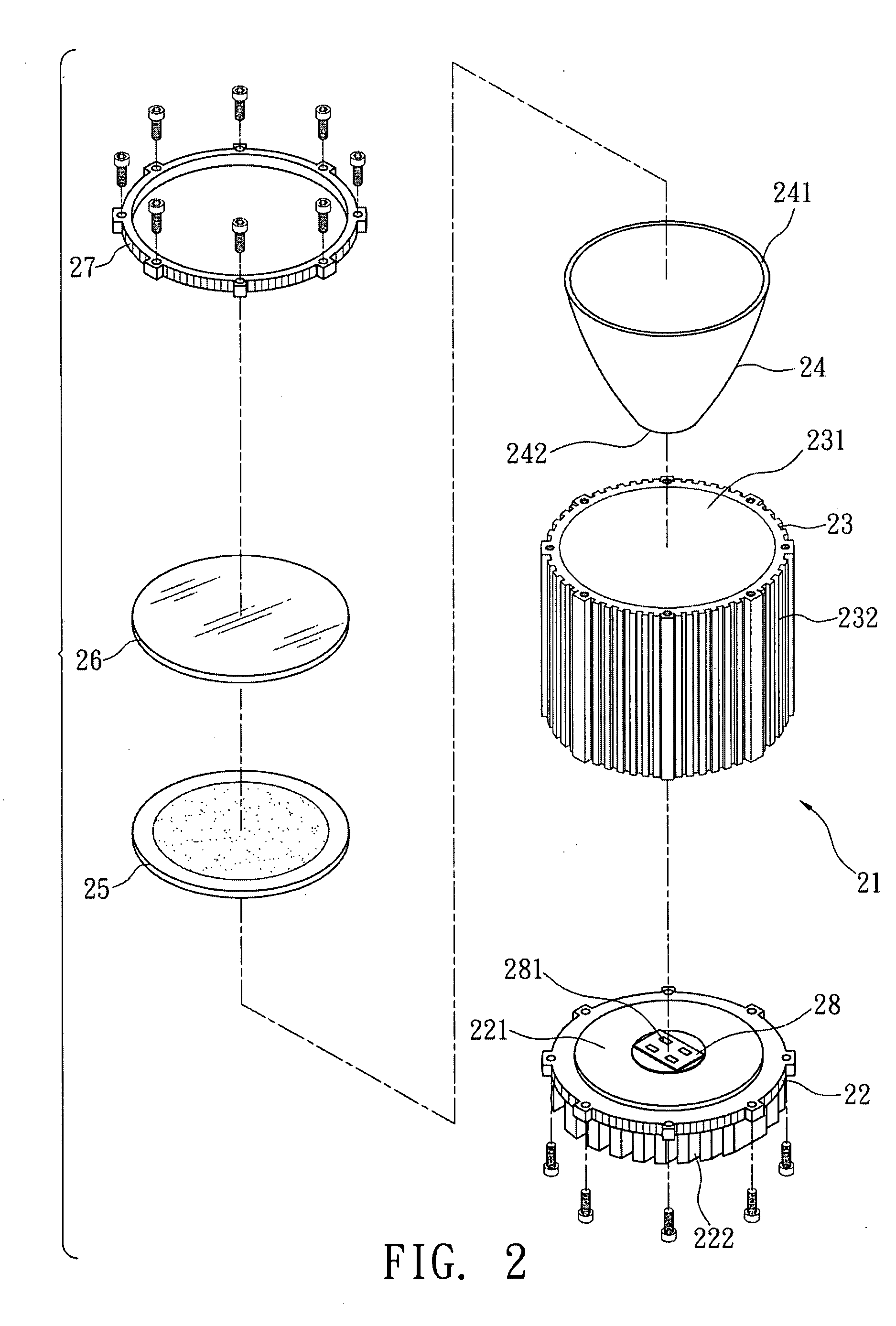Illuminating Device For Tools
a technology of illumination device and tool, which is applied in the direction of semiconductor devices for light sources, lighting and heating apparatus, lighting applications, etc., can solve the problems of short life of conventional halogen light bulbs, inconvenient use, and excessive electrical power consumption of bulbs, so as to reduce radiation heat, reduce the cost of electricity, and prevent the effect of radiation heat from affecting the precision of objects being processed
- Summary
- Abstract
- Description
- Claims
- Application Information
AI Technical Summary
Benefits of technology
Problems solved by technology
Method used
Image
Examples
Embodiment Construction
[0028]The present invention will be apparent from the following detailed description, which proceeds with reference to the accompanying drawings, wherein the same references relate to the same elements.
[0029]Please refer to FIG. 1. The illuminating device for tools according to the invention has a machining area 11 in a tool 10. An object 31 to be processed is disposed in the machining area 11 to go through a machining process. An illuminating device 21 uses the LED as its light source for illumination. It is pivotally connected to one arm 12 in the machining area 11, so that the illuminating device 21 can modify its angle to change the light-emitting direction thereof. The light emitted by the illuminating device 21 can thus directly hit the object 31.
[0030]The light-emitting principle of the LED is to produce photons by combining the electrons and holes in a semiconductor. Unlike the usual halogen light bulb that produces a lot of heat while working and unlike the fluorescent ligh...
PUM
 Login to View More
Login to View More Abstract
Description
Claims
Application Information
 Login to View More
Login to View More - R&D
- Intellectual Property
- Life Sciences
- Materials
- Tech Scout
- Unparalleled Data Quality
- Higher Quality Content
- 60% Fewer Hallucinations
Browse by: Latest US Patents, China's latest patents, Technical Efficacy Thesaurus, Application Domain, Technology Topic, Popular Technical Reports.
© 2025 PatSnap. All rights reserved.Legal|Privacy policy|Modern Slavery Act Transparency Statement|Sitemap|About US| Contact US: help@patsnap.com



